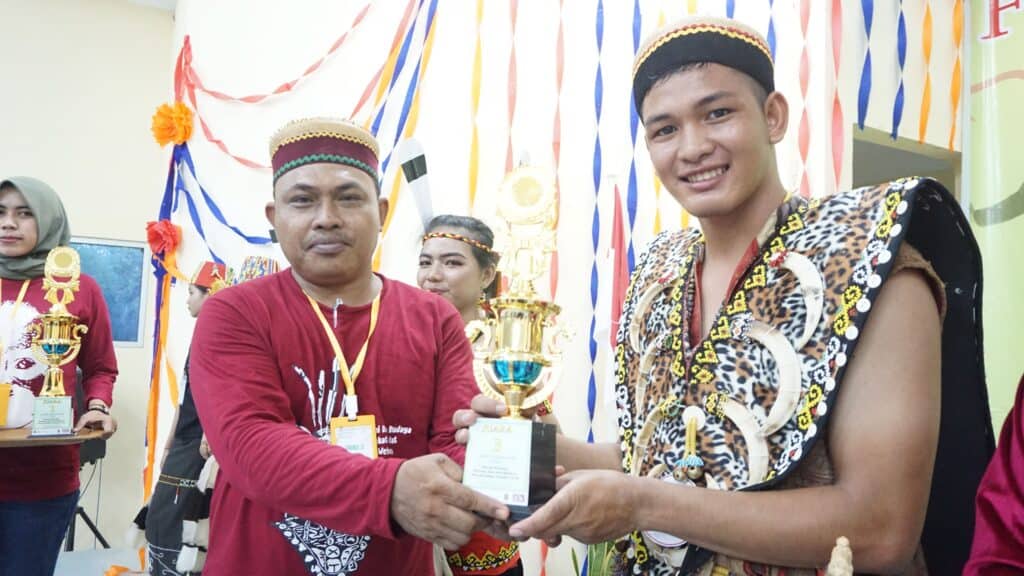The aim of a project that Save the Orangutan is working on, together BOSF-RHO, is to put the Dayak Wehea tribe and their traditional culture on the map. To celebrate the traditions of the tribe, an art and culture festival was arranged in the spring.
The traditional dances of the Dayak Wehea tribe all have one thing in common. The use of accessories and movements that imitate the hornbill, a bird that is sacred to indigenous people in Borneo.
Many of these hornbill-imitating dances were performed at a Dayak Wehea Arts and Culture Festival in March before the pandemic took hold of Indonesia.

The festival was just one of several events, celebrating the Dayak Wehea culture, as part of a project funded by Danish CISU. Save the Orangutan and our partner BOSF-RHO work closely with the Dayak Wehea people in order to strengthen their culture and traditions. This can help provide increased visibility which is an important part in the work for recognition of rights as indigenous people.
Read: The importance of culture for the Dayak Wehea tribe
Dance competition and fashion show
The Dayak Wehea Arts and Culture Festival aimed to present traditional Dayak Wehea products, while also highlighting the passion and talent of the Dayak Wehea people. Many Dayak Wehea youth participated in the festival, as well as members of the older generation.
The festival featured both a dance competition and a traditional Dayak Wehea fashion show. Some performers were even chosen to represent the tribe at the East Kalimantan Expo, which last week showcased a broad range of indigenous cultures.

Dances celebrating the harvest
At the festival, one particularly interesting dance, called the tumbambataq, was performed by a youth group. It involves a large group of people gathered in a large circle. Dancers move to a melody played with traditional musical instruments; the egung (a type of gong or tam-tam), sempeq (a traditional Dayak string instrument carved from a log), and tewung (drums).

It is typically performed during the traditional rice harvest ceremony, which the Dayak Wehea refer to as lom plai or mbob jengea. The group dances performed by the Dayak Wehea express the feelings of joy and gratitude for an abundant harvest.

Hope for the future of the culture
In addition to the dances, visitors to the festival were entertained with a fashion show featuring traditional Dayak Wehea clothing. Participants showcased the uniqueness and richness of traditional design, and explained the meaning and philosophy behind the clothing and accessories used.
For instance, viewers learned that the keltoq, a head accessory for women, is used during a wedding proposal and other traditional events. A teweb, or shield, was used during war in ancient times A pot, or blowpipe, is a tool for hunting. The necklaces and bracelets worn by the Dayak Wehea people is not only accessories, but also symbolise our veins which are supporting our lives.
Read more about the Dayak Wehea tribe
Our partner organisation BOSF-RHO reports that the older generation of the tribe expressed hope that the festival would become a tradition to help promote the arts and traditions of the Dayak Wehea tribe.
BOSF-RHO also talked to a young participant, who expressed hope that the people of Dayak Wehea would continue to honour and carry their customs and traditions into the future.

